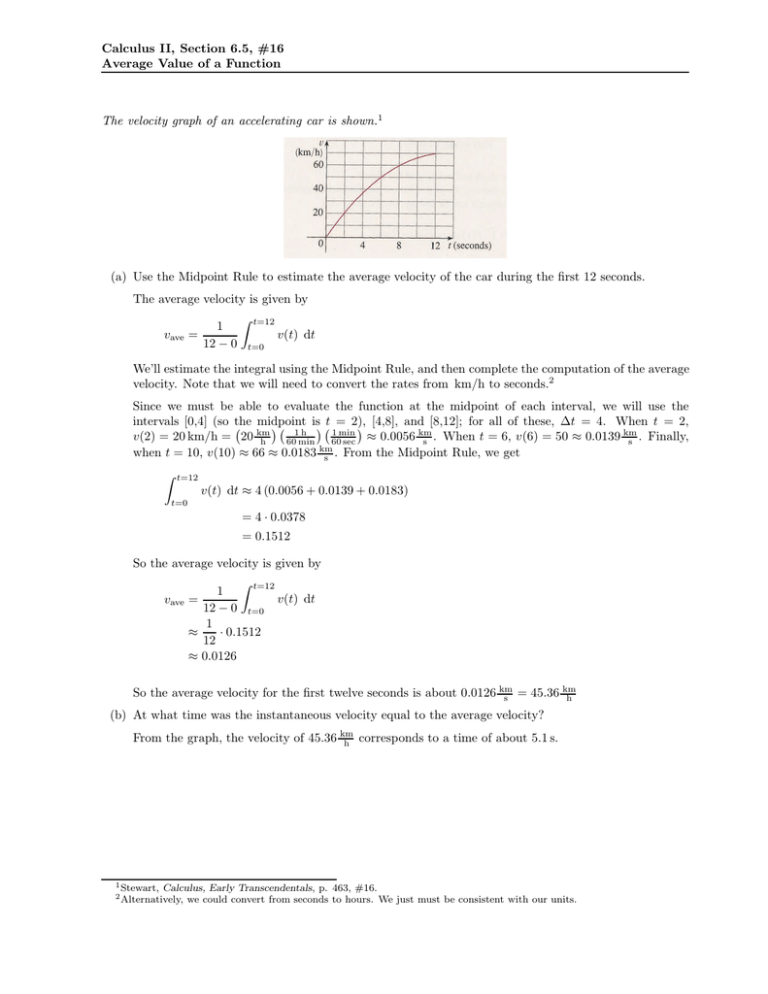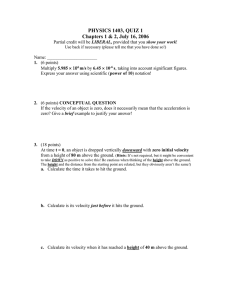Calculus II, Section 6.5, #16 Average Value of a Function The
advertisement

Calculus II, Section 6.5, #16 Average Value of a Function The velocity graph of an accelerating car is shown.1 (a) Use the Midpoint Rule to estimate the average velocity of the car during the first 12 seconds. The average velocity is given by Z t=12 1 vave = v(t) dt 12 − 0 t=0 We’ll estimate the integral using the Midpoint Rule, and then complete the computation of the average velocity. Note that we will need to convert the rates from km/h to seconds.2 Since we must be able to evaluate the function at the midpoint of each interval, we will use the intervals [0,4] (so the midpoint 2), t = 2, 1 h is t 1= [4,8], andkm[8,12]; for all of these, ∆t = 4. When km min . When t = 6, v(6) = 50 ≈ 0.0139 . Finally, ≈ 0.0056 v(2) = 20 km/h = 20 km h 60 min 60 sec s s when t = 10, v(10) ≈ 66 ≈ 0.0183 km s . From the Midpoint Rule, we get Z t=12 v(t) dt ≈ 4 (0.0056 + 0.0139 + 0.0183) t=0 = 4 · 0.0378 = 0.1512 So the average velocity is given by vave Z t=12 1 v(t) dt = 12 − 0 t=0 1 ≈ · 0.1512 12 ≈ 0.0126 km So the average velocity for the first twelve seconds is about 0.0126 km s = 45.36 h (b) At what time was the instantaneous velocity equal to the average velocity? From the graph, the velocity of 45.36 km h corresponds to a time of about 5.1 s. 1 Stewart, Calculus, Early Transcendentals, p. 463, #16. we could convert from seconds to hours. We just must be consistent with our units. 2 Alternatively,

